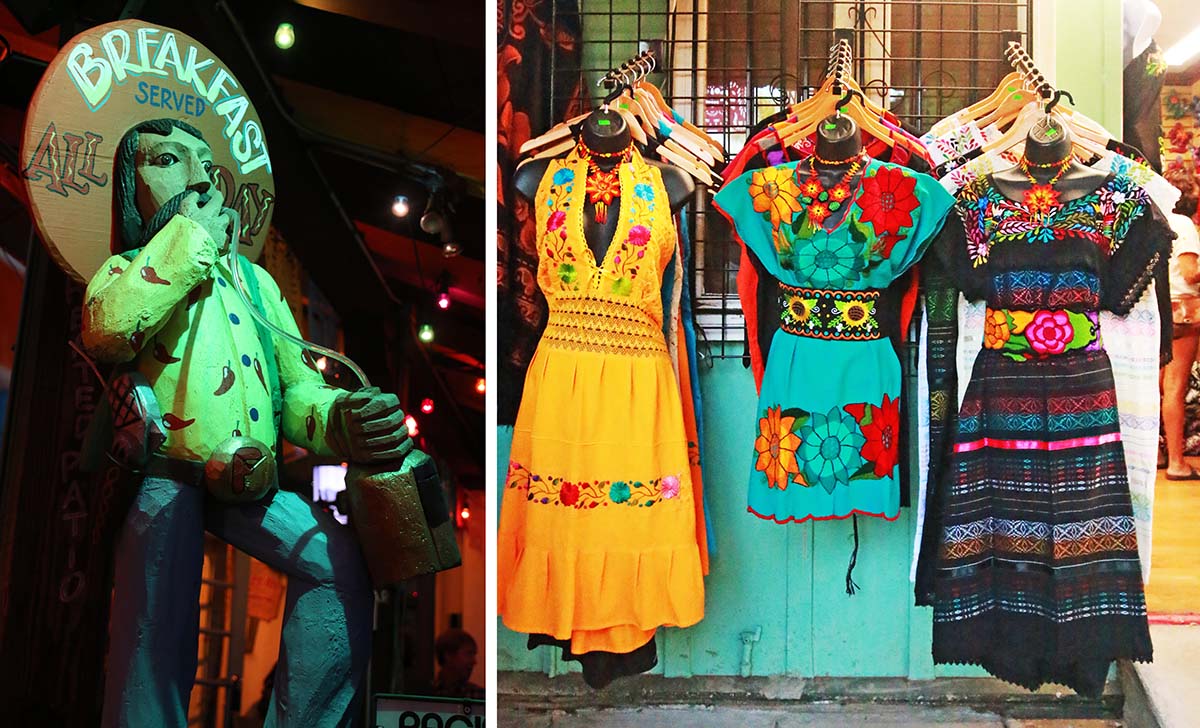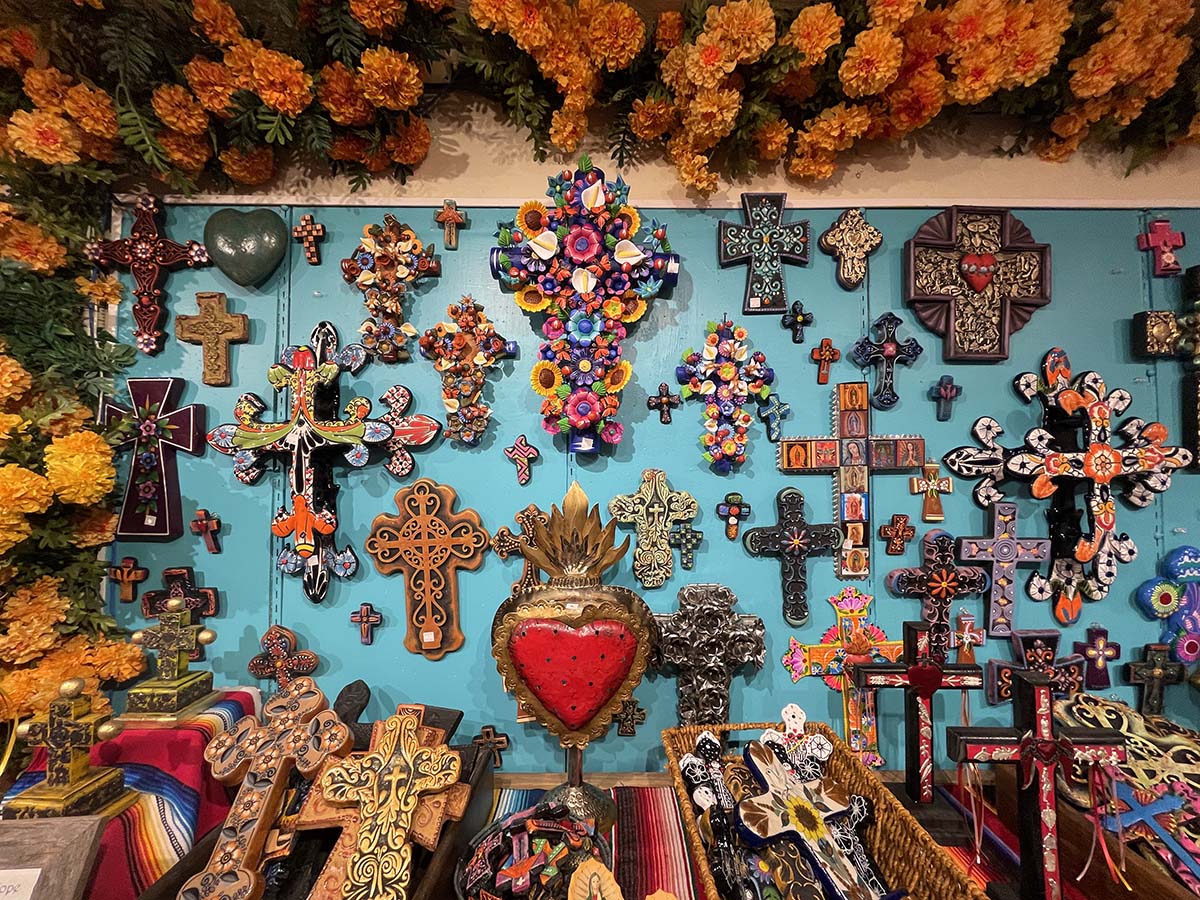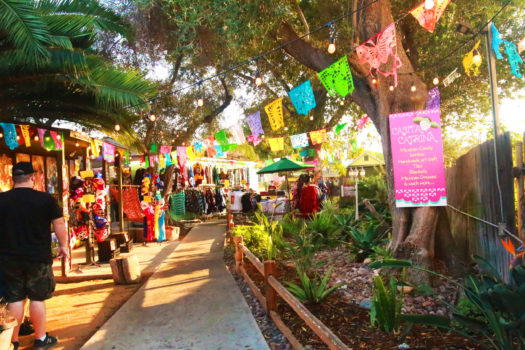
14 HIDDEN GEMS IN OLD TOWN
**THIS IS AN ONGOING PAGE OF UNIQUE PLACES TO EXPLORE IN OLD TOWN SAN DIEGO** If you are a business and feel like you should be included in our list, please shoot us an email: [email protected]!
About Old Town State Park
Old Town State Park is a lively and bustling tourist destination packed with unique boutiques, restaurants and more more than two dozen buildings depicting life from the early Mexican-American period of 1821-1872. Five original adobe structures mix with reconstructed sites and newer buildings done in the same style.
It is BRIMMING with hidden gems to be discovered.
Kumeyaay History:
The Old Town that we know today has a long history dating back far beyond the colonial days. Before the wooden structures we see presently were ever constructed, Old Town was a Kumeyaay Village known as Cosoy (Kosa’aay) since as early as 10,000 B.C. The village consisted of around 40 families who lived in pyramid-shaped huts made of branches and earth.
In 1769, Spanish explorers landed in San Diego and were welcomed by the Kumeyaay. It is said that the Spaniards came with many gifts for trade, reserving important space for such trade over food and other necessary items. The Kumeyaay provided the weakened men food, medicine and refuge. Only 8 shipmates had survived the journey, most dying of scurvy or malnourishment.

It wasn’t long before the Spaniards had regained their health and began claiming their own territories, “less than a musket shot”, from the village. The Spaniards erected a hospital camp and fortress on Presidio Hill and occupied the water source of the village.
The camp gradually was fortified and became the San Diego Presidio and the first San Diego Mission. It was from this base at Kosa’aay that Spain’s colonization of California and the California Mission Chain were launched.

Once the mission and presidio were established, the Spaniards began sending more of their people across seas to begin colonizing the area. The Kumeyaay people were not equipped to handle the diseases the Europeans brought over and slowly their health and numbers began to decline.
Make sure to also check out our list of hidden gems in La Jolla!
Kosa’aay officially became for the west coast what Jamestown and Plymouth were for the east. Beginning right here in San Diego, from that one village site, the colony that is now known as California was born. Also of importance is that on August 15th, 1769 Kosa’aay was the location of the Kumey’aay nation’s first organized resistance to the cultural tyranny of the conquistadors.

Colonial History:
In 1821, the Mexican War of Independence ended and San Diego was granted the status of a Mexican pueblo. Shortly after, the fort was abandoned and people began expanding their homes and businesses to what we now know as Old Town. This area became the main hub of San Diego until Alonzo Horton purchased 900 acres in what is now known as downtown.
Shortly after, residents began moving their businesses to Horton’s “New Town”, abandoning Old Town. In 1871, government records were moved from Old Town to the new county courthouse in New Town, and Downtown permanently became the new focal point of San Diego.
List of Hidden Gems in Old Town:
1. Heritage Park
Heritage County Park was developed to preserve examples of San Diego’s historic Victorian architecture including Italianate, Stick-Eastlake, Queen Anne and classic revival styles. The properties were all relocated from their original locations with the help of San Diego County and Save Our Heritage Organisation.
2. Cosmopolitan Hotel
The Cosmopolitan hotel is one of the oldest standing buildings in San Diego County. Built in 1829, this hotel was once the home of Juan Bandini and his family, whom are some of San Diego’s first pioneers.

3. Dia de los Muertos
Día de los Muertos is a very special time, when once a year, the spirits of loved ones who have died return to earth to celebrate this holiday with friends and family. Over fifty local businesses, museums, and shops will create traditional Día de los Muertos altars that can be enjoyed by the whole family. Many of the altars will honor the historic figures from Old Town’s past, and others will reflect more current stories meaningful to that place of business.

4. El Campo Santo Cemetery
If you want to really get a glimpse into the past, here is a good place to stop by. El Campo Santo Cemetery began its story in 1849. There are 477 bodies buried here and unfortunately not all of them retain their tomb. Take a look at the sidewalk and street directly outside for grave markers. Yep, some of the graves are literally in the street!

5. Mason St. Schoolhouse
Built in 1865, the Schoolhouse was the first publically owned school in San Diego County. The building was a one-room, wood-frame, shingle-roofed structure with a ten foot high ceiling. A pot-bellied iron stove heated the room, and a water bucket and dipper provided the only indoor plumbing. All eight grades were taught in the single room.

6. La Casa de Machado y Stewart Museum
Jose Manuel Machado, a corporal in the soldados de cuera (leather-jacket soldiers) at the presidio, built an adobe here in the early 1830s. HIs youngest daughter, Rosa, inherited the casa in 1861. where her and her husband raised their 11 children! Descendants of the family lived on the premises until 1966. In 1973, California State Parks restored the home, and converted it into a house museum representing a Mexican era adobe.

7. Seeley Stables
Seeley Stables was a “well built and sturdy” two-story, square-sided, shingle-roofed barn used to stable horses and house stagecoaches. It probably was the first structure that Albert Seeley, who operated a stage line between Old Town and Los Angeles, constructed after buying the Bandini property in 1869.
The 1974 reconstructed Seeley Stable houses a fine collection of 19th-century overland transportation gear and vehicles, including a carreta or ox-drawn cart, mud wagon, Concord stage, and huge tow-wagon freighter. Most of these rare artifacts were given to California State Parks by Roscoe E. “Pappy” Hazard, a former rancher and retired highway contractor.

8. Old Adobe Chapel
This site was originally the home of San Diego’s first coroner but was later purchased by Don José Antonio Agüirre and turned into a Catholic chapel.. On November 21, 1858, it was dedicated as the Church of Immaculate Conception and later enclosed by weatherboarding. One of the most interesting facts about this chapel is that Agüirre’ s tomb is actually inside, located in the small right wing.
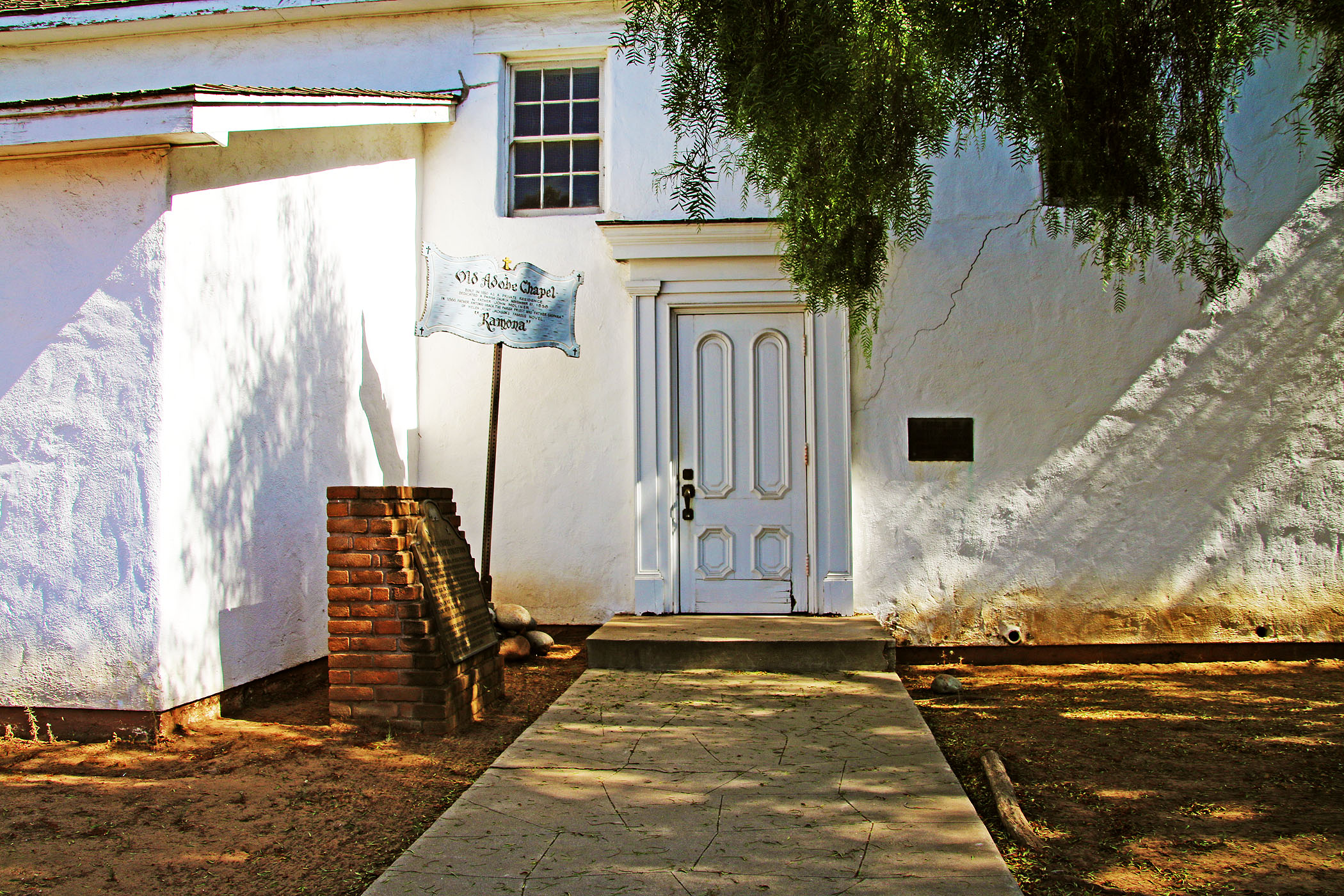
9. La Casa de Estudillo
La Casa de Estudillo is one of the oldest homes in San Diego and oldest surviving examples of Spanish architecture in California. It was built in 1827 by early settler, José María Estudillo and his son José Antonio Estudillo.

10. Whaley House
This home is said to be one of the most haunted spots in the U.S. The house was built where a graveyard once was and where the local hangings were held. Mutiple family members also died in the home. For these reasons, it is believed to be haunted. I have had my own personal ghostly experience here which I share on the page!

11. Sheriff’s Museum
UPDATE: This museum has closed down. The Sheriff’s Museum consists of 6800 square feet of exhibit space, covering the entire history of the San Diego County Sheriff’s Department from its inception in 1850 through today.
Some of the more attention-grabbing displays include confiscated gang-related items, household objects used to cook meth, a helicopter you can sit in, jail-made tattoo kits & weapons, the Heaven’s Gate display and a jail cell you can go inside.

12. American Coffee House and Tea
Update: This shop has closed down and now only sells online. Not only is this some of the highest quality and tastiest tea and coffee selection around, but this building was actually the first black-owned business in California!

13. Iipay ~ Tipai Kumeyaay Mut Niihepok
This interpretive garden has been in the making since 2014 actually. Discussions for the park had been made between the Old Town Working Group and Tribal members from: Barona, Campo, Ewiiaapaayp, Inja-Cosmit, Jamul, La Posta, Manzanita, Mesa Grande, San Pasqual, Santa Ysabel, Sycuan, and Viejas Bands of the Kumeyaay Nation.
The garden is full of Native plants that the Kumeyaay have used for thousands of years with educational plaques to teach you their names and uses. The park also includes a public gathering area for events and ceremonies. Keep your eye out for the stunning mosaic pieces as well!

14. Oculto 477
We here at Hidden San Diego adore speakeasies. Today they are nothing more than a nod to the prohibition era (1920-33), when alcohol was illegal and could only be indulged in secrecy. They are always a fun experience though that involves secret passageways and passwords in order to enter.
There are a ton of unique speakeasies in San Diego, each one coming with its own fun theme. At Oculto 477, the theme blends life with death, Catholicism (you must confess your sins in order to enter) and heavy gothic undertones…all with a Spanish twist.
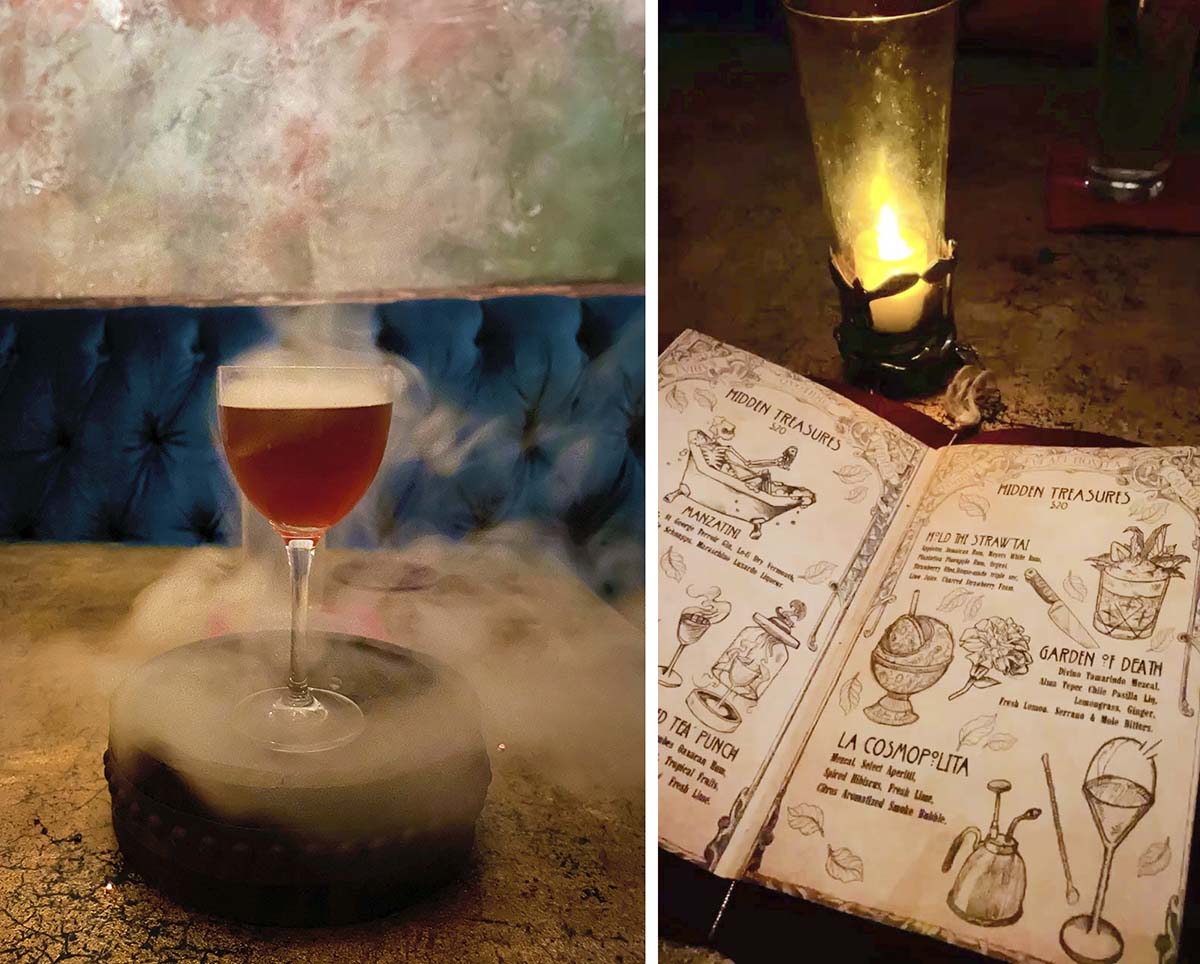
Make sure to check out all the unique boutiques and grab a bite at one of the many Mexican restaurants. There is so much beauty to be discovered here:


We came across an old jail cell behind some of the buildings:
